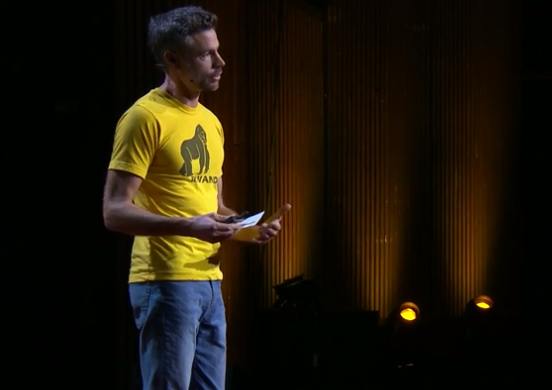Now, you might wonder, "Come on, how much could five percentage points of global electricity be?"
現在你可能會問,“拜托,全球5%的電力能有多少?”
Well, it turns out to be quite a bit.
事實證明還蠻多的。
It's the equivalent of 60 nuclear plants the size of Diablo Canyon, California's last nuclear plant,
這些電力等價于60個核電站的產量,每個都有加州核電站“代阿布洛”的大小,
or 900 solar farms the size of Topaz, which is one of the biggest solar farms in the world, and certainly our biggest in California.
或900個“托帕石”大小的太陽能發電廠,“托帕石”是世界上最大的太陽能發電廠之一,當然也是加州最大的。
A big part of this is simply that fossil fuels are increasing faster than clean energy. And that's understandable.
主要原因僅是化石燃料的使用率在逐年增加,要比清潔能源的速度快。這是可以理解的。
There's just a lot of poor countries that are still using wood and dung and charcoal as their main source of energy, and they need modern fuels.
因為還有很多貧困國家,它們還在把木材、糞便和木炭作為主要的能源材料,他們需要現代燃料。

But there's something else going on,
但是,還有另一件事情正在發生,
which is that one of those clean energy sources in particular has actually been on the decline in absolute terms, not just relatively.
那就是有一種特定的清潔能源的使用量的絕對值正在下降,而非僅僅是相對占比。
And that's nuclear. You can see its generation has declined seven percent over the last 10 years.
那就是核能。你會發現,在過去的10年里,核能的發電量已經下降了7%。
Now, solar and wind have been making huge strides, so you hear a lot of talk about how it doesn't really matter,
當前,太陽能和風能正在飛速發展。所以你聽到了很多言論,表示核能下降不是問題,
because solar and wind is going to make up the difference.
因為太陽能和風能會彌補這一缺失。
But the data says something different.
但數據卻告訴我們事實不是這樣的。
When you combine all the electricity from solar and wind, you see it actually barely makes up half of the decline from nuclear.
當你把所有由太陽和風創造的電力總量相加時,你會發現這僅彌補了核能發電缺失的一半。











